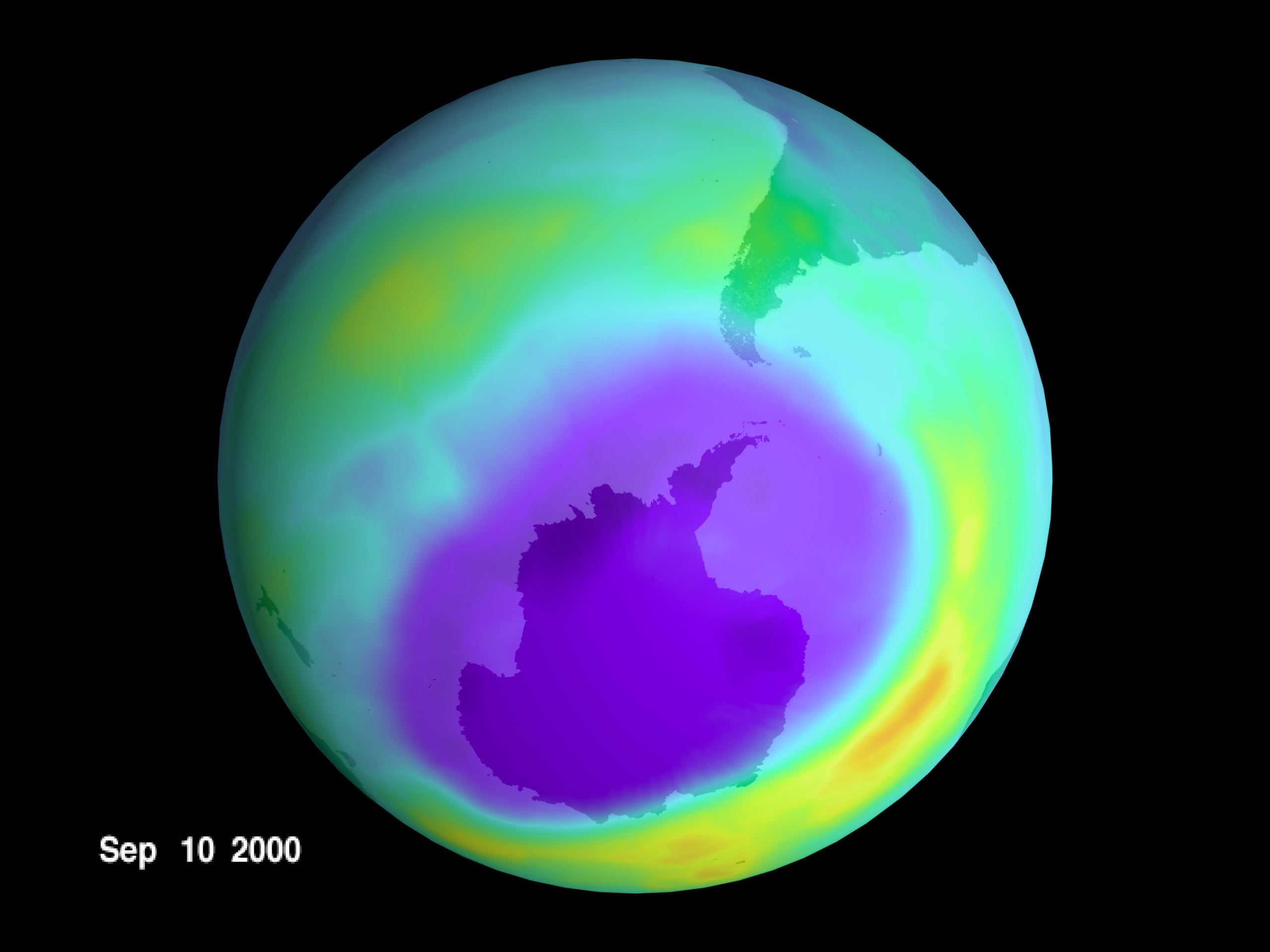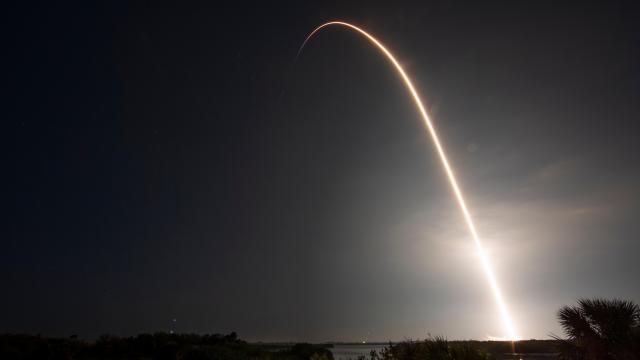The rapidly rising number of space launches could pose a new threat to Earth’s critical ozone layer, according to a growing body of scientific research.
Our ozone layer is often touted as a global environmental success story. Since the 1987 signing of the Montreal Protocol — an international treaty to protect the ozone — countries around the world have rallied to stop producing and emitting the chemical compounds that contributed to the dramatic thinning of the ozone layer above Antarctica. Despite a brief backslide in the 2010s, the most recent United Nations report, released in January, indicates that we’re on track for a full ozone recovery by 2066.

Yet the U.N. assessment also carried a warning: Just because we’re headed for ozone recovery doesn’t mean it’s a guarantee. Numerous hazards, old and new, could emerge to derail decades of global progress. Among these potential dangers to the ozone are geoengineering proposals that aim to mitigate climate change. There’s also the threat of climate change itself; more aerosol and greenhouse gas emissions could harm ozone recovery. And as the U.N. points out, space launches are yet another thing for us to consider.
“Rocket launches presently have a small effect on total stratospheric ozone,” the scientists write in their report. But that’s liable to shift moving forward with new propellants, satellite constellations, and the ongoing increase in the number of space launches, the report notes. More than 180 rockets were launched into space in 2022 — the most ever in a year — while the number of satellites launched has been increasing exponentially, according to a review study published last month in the Journal of the Royal Society of New Zealand.
“We’ve known since the early 90s, that rocket launch emissions could lead to destruction of the ozone layer. But it’s never really been a big problem before, because we’ve had so few launches that the effects are negligible,” said Laura Revell, an atmospheric chemist at the University of Canterbury in New Zealand and senior author of that study, in a video call with Gizmodo.
But that’s starting to change, which means research, monitoring, and space exploration need to change, too, Revell noted. Rocket launches’ impact on the upper atmosphere goes widely unmonitored and unregulated, she said. “But we think this is the right time to address it — before the number of launches worldwide really scales up.”
Revell’s recent review, conducted along with two other researchers, assessed the rising threat of space launches. Across the dozens of past studies the scientists looked at, they found evidence that multiple emissions products from launches can negatively impact the ozone through various chemical reactions or the temperature shifts that they cause. These worrying emissions include water vapour, nitrogen oxides, black carbon, alumina particles, hydrogen gas, and hydrogen chloride. Further, the mechanism of launches means these ozone-harming gases and particles are being delivered directly to where they can do the most damage: the stratosphere, where 90% of atmospheric ozone resides.
Though some researchers have begun to look at the real-world impacts of individual launches, it remains an understudied field wherein the science is based more on models than true observations. There are a lot of things we still don’t know, emphasised Revell. “Measurements of exhaust plumes are limited, and most current data rely heavily on plume modelling or best estimates from combustion calculations. Even the most ubiquitous fuel, liquid kerosene, is still relatively poorly modelled in exhaust concentrations,” the study authors wrote.
Related article: Rocket Launches Could Be Polluting Our Atmosphere in New and Unexpected Ways
When researchers do evaluate the specifics of individual launches, they often find disturbing results. A 2022 study that modelled the 2016 Falcon 9 launch of the Thaicom-6 satellite found that this single launch likely produced a metric ton of ozone-depleting nitrogen oxides — equivalent to about 1,400 cars-worth of annual emissions. Moreover, the amount of overall ozone loss due to rocket launches could be more than 10-fold what has been previously assumed because of a lack of comprehensive research, according to the 2022 modelling study.
For context: Most living things on Earth depend on an intact ozone layer to survive and thrive. The protective blanket of atmospheric ozone absorbs the Sun’s most harmful rays, known as UVB light wavelengths, that cause skin cancer, cataracts, and crop damage, among other things. A healthy ozone also protects us from an even worse version of climate change. Without it, the world would be 4.5 degrees Fahrenheit warmer than present.
However, just because rocket launches are increasing doesn’t mean the ozone layer has to decrease. Beyond identifying the problem of increasing space launches and potential ozone harms, Revell and her co-authors also suggested a path forward for atmospheric researchers and private space companies to tackle the problem. In their view, a sustainable future for space flight is within reach, and the earlier we make changes, the better.
Some of their suggested changes include more research and monitoring to keep tabs on launch emissions and greater access to open data on launch emissions. Another recommendation is for launch providers to consider the stratospheric effects of their rockets at the design and testing stage.
“This isn’t a doom-and-gloom type prediction,” said Tyler Brown, an astrophysics researcher at the University of Canterbury and first author on the review study, in an email to Gizmodo.”Many things can and will change in the future. Our main goal is to get people discussing a sustainable rocket industry in the present with a serious lens for action — not just awareness.”
